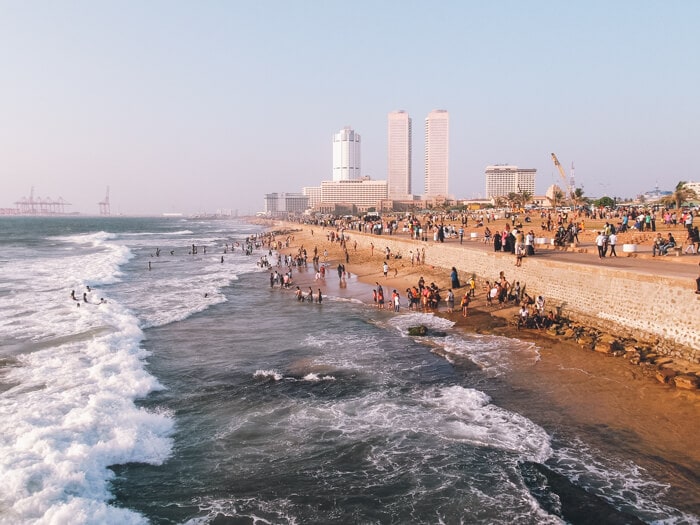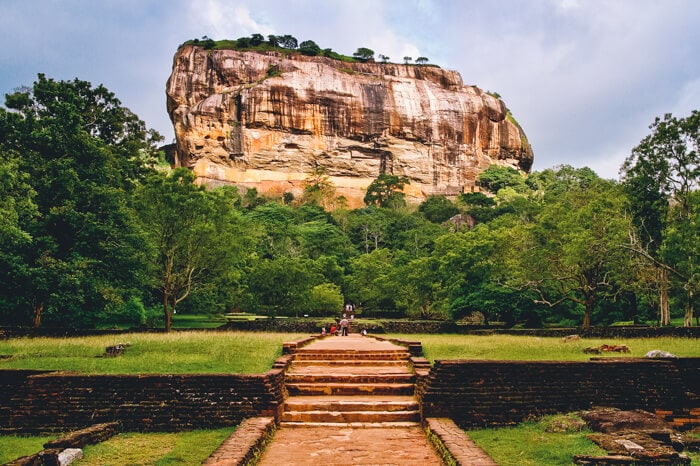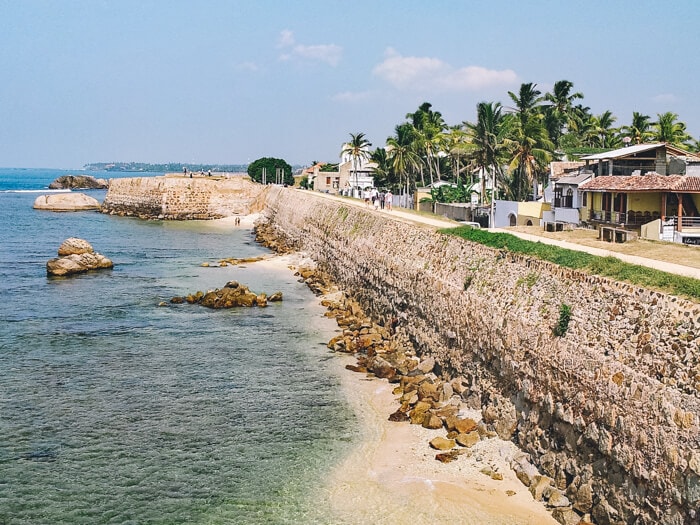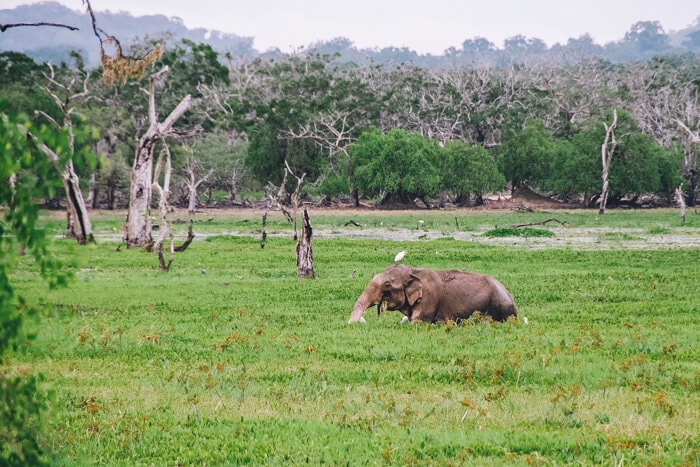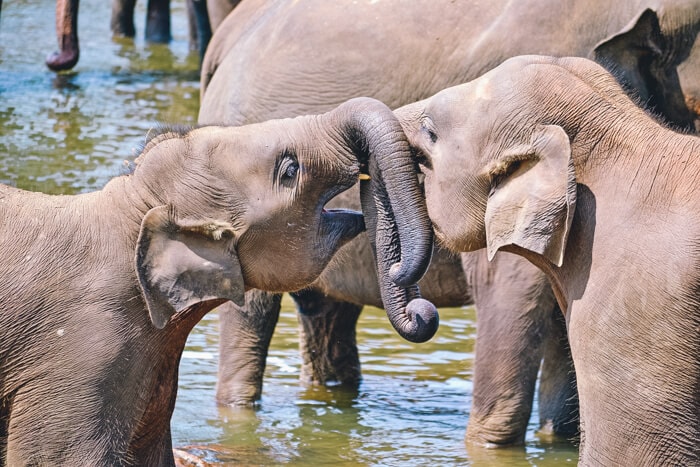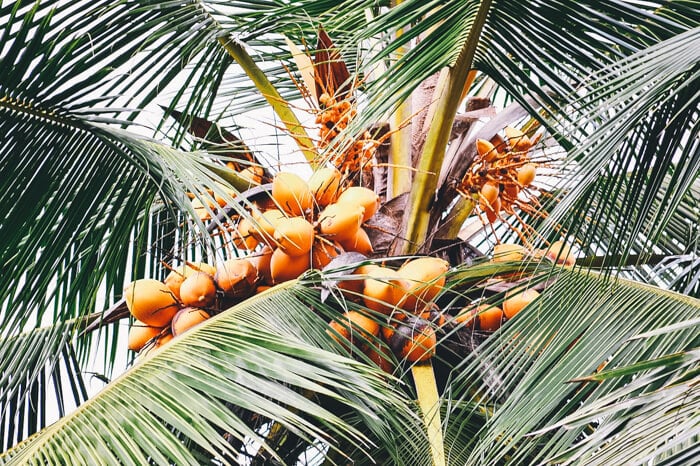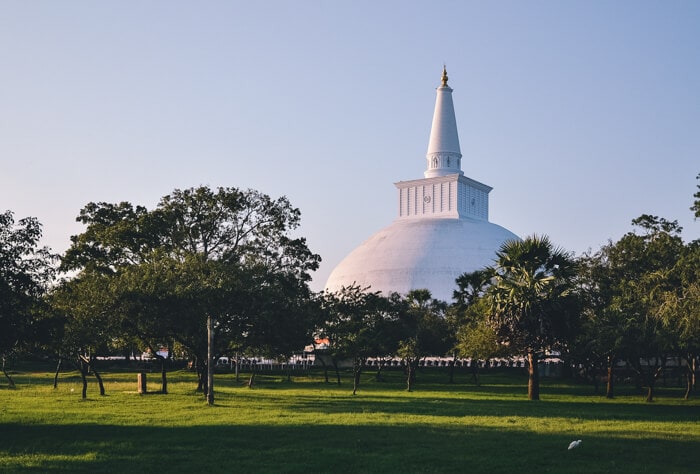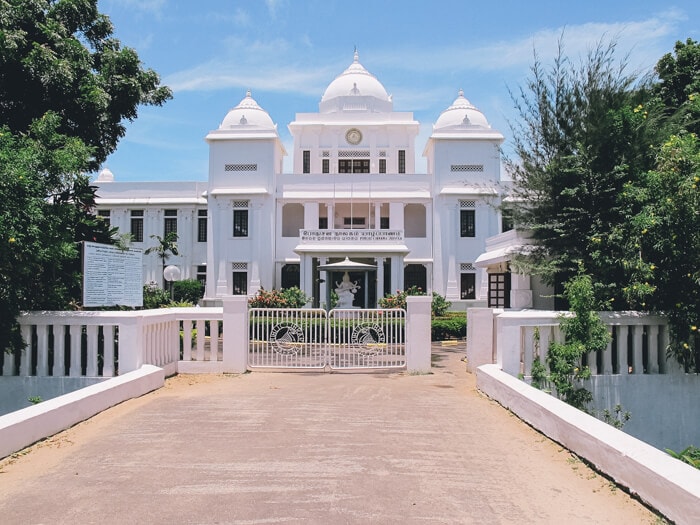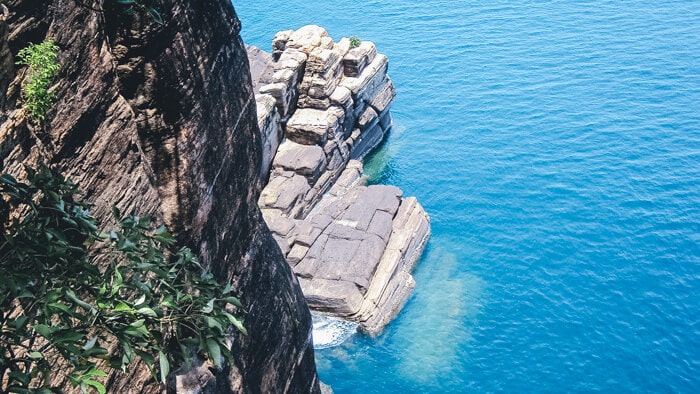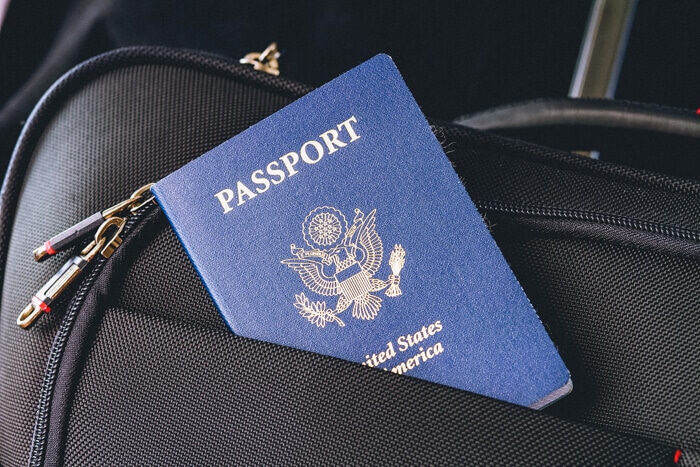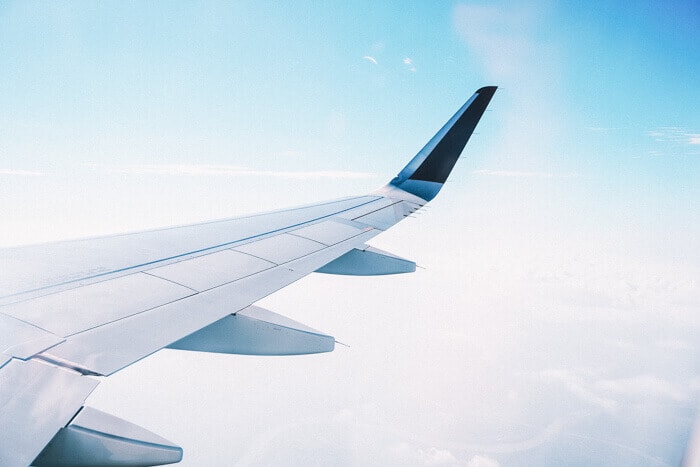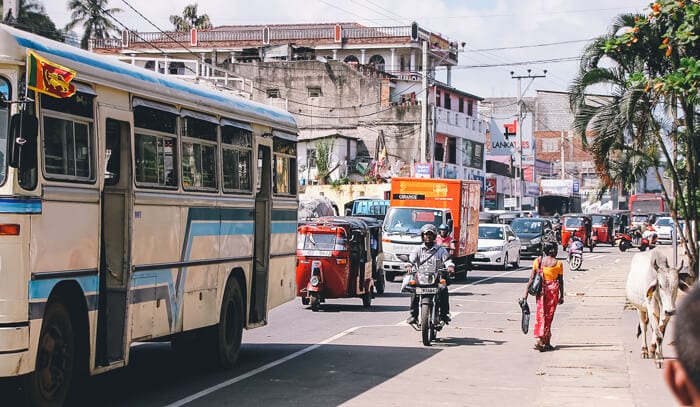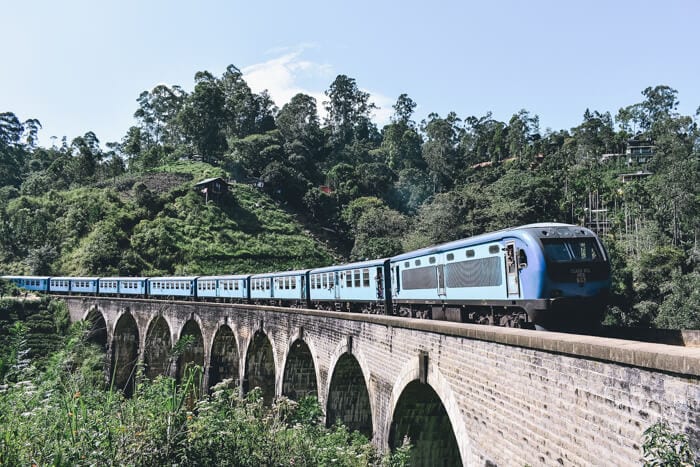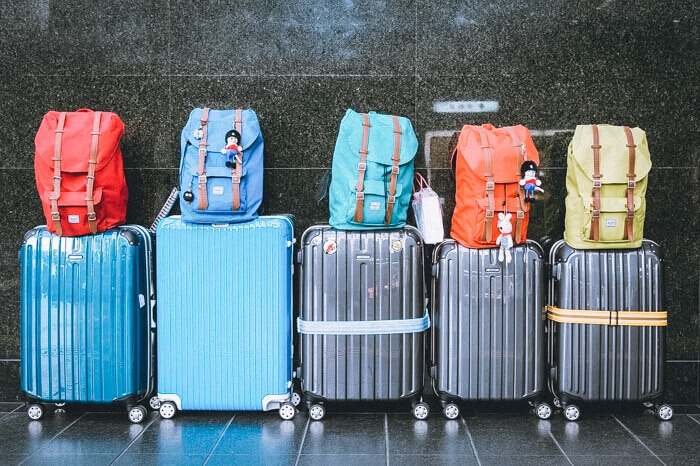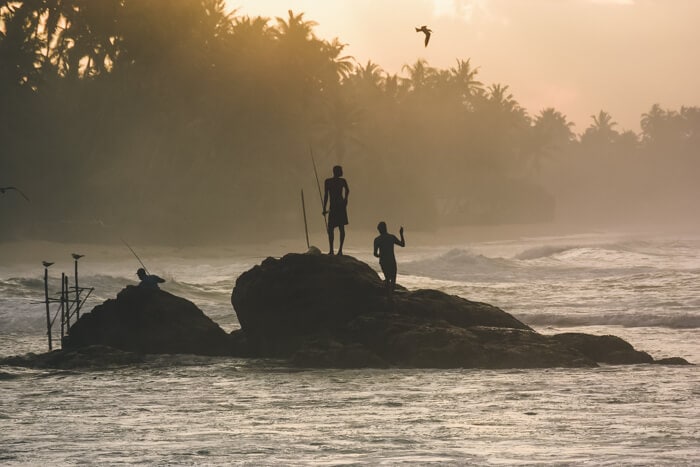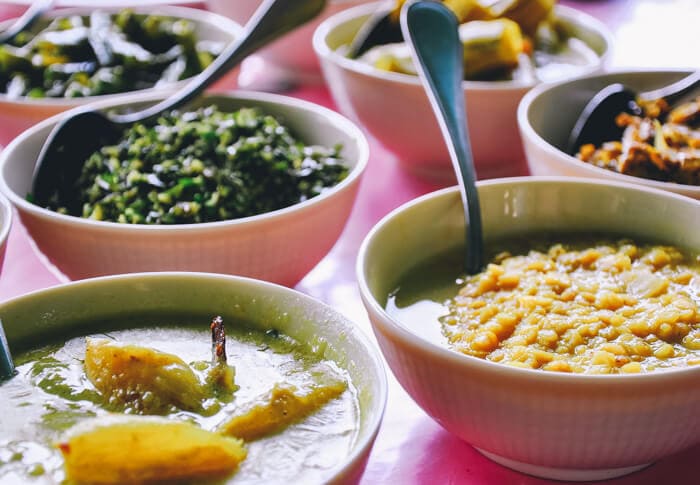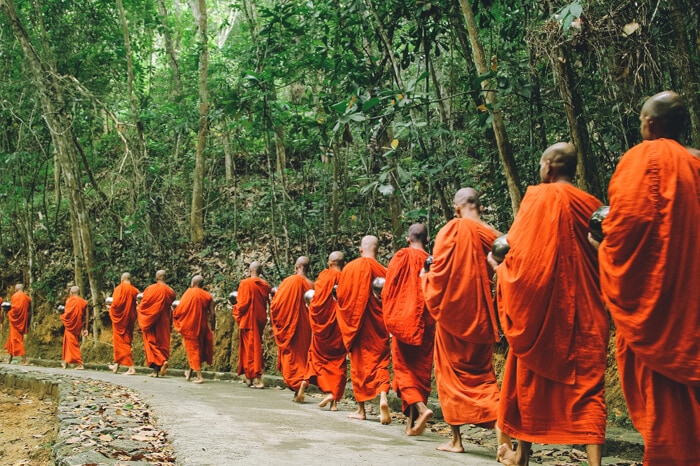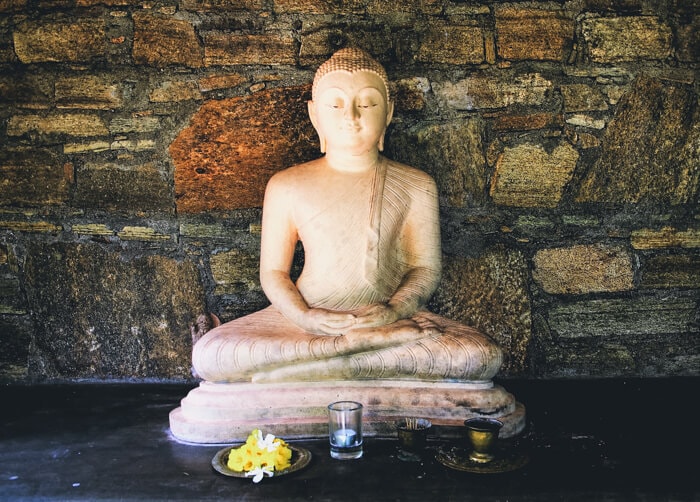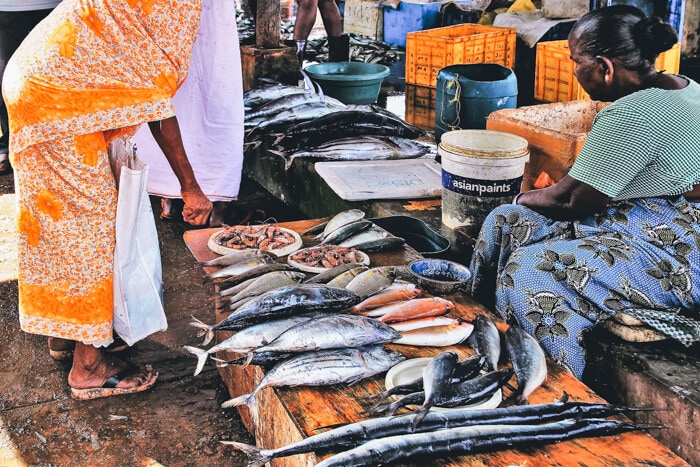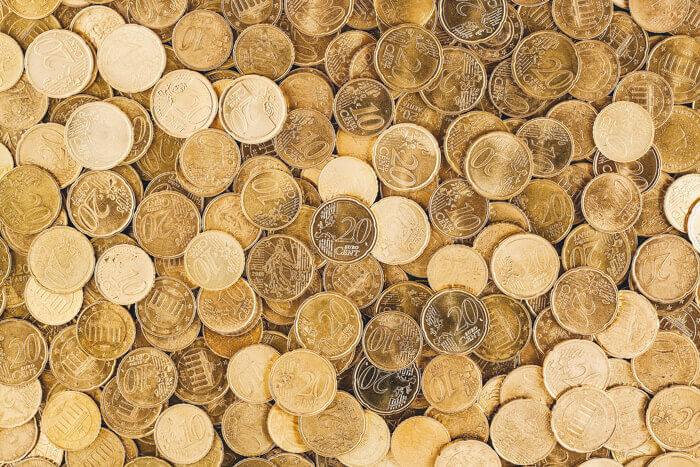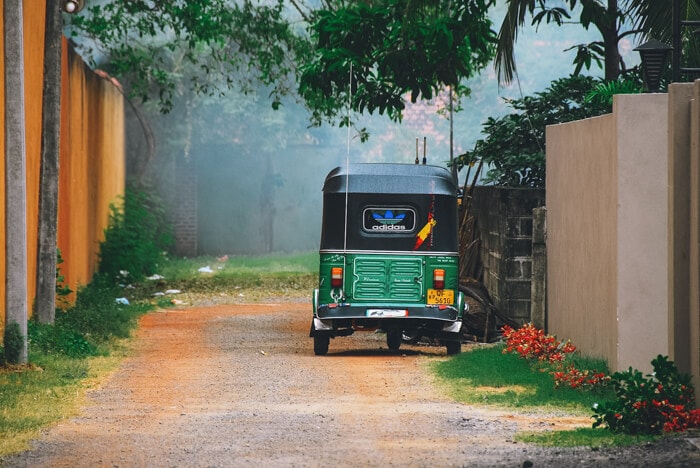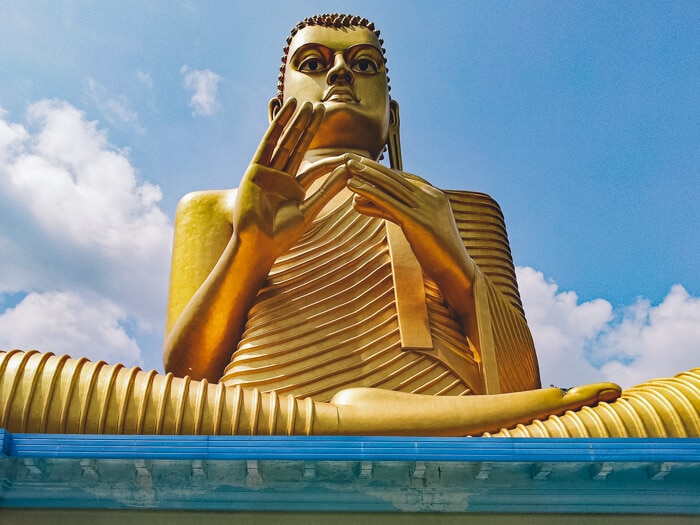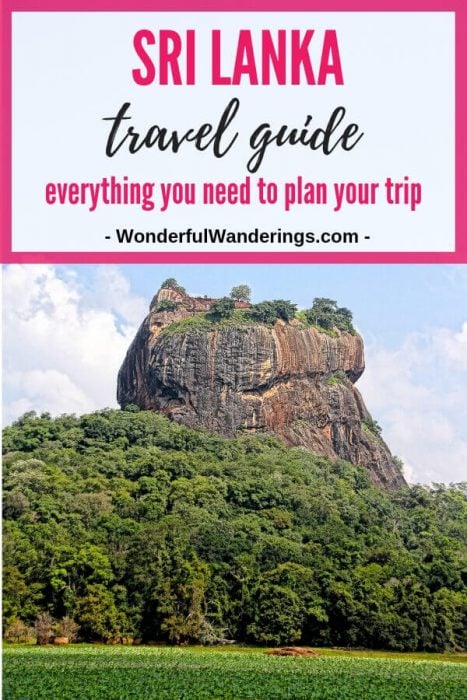Want to plan your Sri Lanka holidays? This guide has got you covered with all you need to know!
Sri Lanka is an island nation in Asia, located off the southeast tip of the Indian subcontinent. Tourism here has grown exponentially since the end of a long-running civil war in 2009. Now, it attracts millions of tourists each year, who come for the pristine beaches, vibrant religious festivals, and to see animals in their natural habitats in the many national parks.
Because the island is so small, it’s very accessible – one day you can be sunbathing on the beach, while the next you’ll be wandering through tea plantations in the central highlands. The train journey from Ella to Kandy is considered as one of the top 5 most beautiful rail journeys in the world.
The capital city is Colombo, while other important cities are Kandy, Nuwara Eliya, and Galle. Sri Lanka’s main industries are tourism, and it’s an important producer of tea, coffee, gemstones, rubber, tropical fruit, and cinnamon.
Contents
- Sri Lanka holidays: quick facts
- Sri Lanka provinces
- How to travel to Sri Lanka
- How to travel in Sri Lanka
- What to pack for your Sri Lanka vacation
- When to visit Sri Lanka
- What Sri Lankan food to try
- Famous events in Sri Lanka
- Public holidays in Sri Lanka
- Cultural customs to be aware of in Sri Lanka
- Where to stay in Sri Lanka
- Don’t forget travel insurance
- Is Sri Lanka safe to travel to?
- The use of cash and cards in Sri Lanka
- Calling abroad, WiFi and data use in Sri Lanka
- Tipping in Sri Lanka
- A brief history of Sri Lanka
- Posts about Sri Lanka
Sri Lanka holidays: quick facts
Size: 65,610 km2 or 25,332 sq mi
People living there: more than 20,277,000
Capital: Colombo
Governmental structure: semi-presidential representative democratic republic
National day: February 4
Time zone: Sri Lanka Time (SLT) / UTC +5:30
Currency: Sri Lankan rupee
Power voltage and socket type(s): 230V, plug types D, M, and G. If these plug types don’t match your devices, make sure to bring a universal adapter.
Official religion(s)/Freedom of religion: Freedom of religion. 70% of the population is Buddhist, followed by Hindu, Muslim, and Christian.
Official language(s) and general knowledge of English: Sinhalese is the most commonly spoken language along with Tamil. English is not widely spoken.
Drives on this side: left
International driver’s licence accepted? yes. An endorsement is recommended from the Sri Lankan automobile association if you plan on using it.
Phone code: +94
Do you need vaccinations for Sri Lanka? Tetanus. Rabies, Typhoid, Hepatitis A and B are advised. A yellow fever vaccination certificate is necessary for travelers over 9 months old who have arrived from countries at high risk of yellow fever or transited through an airport for more than 12 hours in one of these countries.
Can you drink the tap water? no, but you can bring a Steripen to purify it.
Want a more diverse, quirky selection of Sri Lanka facts? Check this post.
Sri Lanka provinces
1. Western Province
Western Province is the most densely populated province in Sri Lanka and where you’ll find the capital city and commercial hub Colombo. The city isn’t famed for tourism, although there are some luxury colonial hotels, and the nearby beach resort Mount Lavinia is home to the National Zoological Gardens, which are some of the biggest in Asia.
Maybe more popular among tourists in Western Province is Negombo – home to Angurukaramulla temple and it’s large Buddha statue, the ruins of a 17th-century Dutch fort which is now a prison, and the Negombo Lagoon which is lined with fishermen’s huts. If you want to get out of the cities, then take advantage of the hiking trails in Sinharaja Forest Reserve.
2. Central Province
The Central Province is one of the top places to visit in Sri Lanka thanks to it boasting some of the country’s most famous and sought-after attractions. Arguably the most famous, and sometimes called the 8th wonder of the world is UNESCO World Heritage listed Sigiriya or the Lion Rock. Here, you’ll find the remains of a 5th-century fortress atop a sheer rock rising out of the surrounding flatlands.
Central Province is a nature lover’s dream, as it’s also home to Horton Plains National Park and the highland city of Nuwara Eliya, gateway to the tea plantations. Nestled among the plantations and mountains is the city of Kandy, a vibrant city set around a lake that really comes alive during the Kandy Esala Poya Perahera festival, held at the temple of the Sacred Tooth.
3. Southern Province
Another province which sees a high number of tourists coming through each year – Southern Province is where you’ll find the colonial port town Galle. Here, you’ll find a city with Portuguese, Dutch, and British influence in the car-free city center streets. The lighthouse and Dutch fort are particular highlights when in the city.
Along the southern coastline are some of the best beaches in Sri Lanka, including Unawatuna and Mirissa, and Welligama. In the east of the province is Yala National Park, one of the best spots in the whole country to see leopards. Other wildlife in the national park includes elephants, crocodiles, and bird life.
4. Uva Province
Uva is a small province and doesn’t have much to offer in the way of city life, but it makes up for that with an abundance of natural attractions. Yala National Park extends across the border from the Southern Province into Uva. The province is known for its waterfalls – three of its biggest attractions are Dunhinda, Diyaluma, and Rawana falls.
As well as Yala National Park, Gal Oya is the state’s other famous national park. This extends into the Gal Oya hills and the Central Highland mountains. The 9 Arch Bridge, also known as the Bridge in the Sky, is a colonial-era railway bridge which will remind visitors of the Hogwarts Express and the Harry Potter films!
5. Sabaragamuwa Province
Sabaragamuwa Province is probably Sri Lanka’s best spot if you want to see elephants. Pinnawala Elephant Orphanage is a sanctuary which rehabilitates elephants which have been injured in the wild or mistreated by humans. As well as this, Udawalawe National Park has a huge elephant population which you can easily see on a safari trip through the park.
Another curious attraction in the province is Bible Rock, a large rock formation in the shape of a book, complete with trails and paths for hiking. Ratnapura and Kegalle are the districts that make up Sabaragamuwa Province.
6. North Western Province
The North Western Province is known for having several coconut plantations. The small fishing towns of Puttalam and Chilaw are the main towns, but the capital of the region is Kurunegala. The Dutch port of Kalpitiya is a great spot for dolphin and whale-watching or kitesurfing, so adventurers will enjoy this part of the country.
Wilpattu National Park is a protected area and a great spot for trying to spot leopards. Nature lovers will also love Anawilundana bird sanctuary. Many of the biggest attractions in the province that aren’t beaches or nature reserves are temples, Sri Munneswaram Devasthanam is one of the most important Hindu temples in the country and has over 1,000 years of history.
7. North Central Province
North Central Province is Sri Lanka’s largest province, but it’s one of the least densely populated. The state capital Anuradhapura is one of Sri Lanka’s 8 World Heritage sites, as it is one of the most sacred cities in Sri Lanka. Many Buddhist places of worship are located in the city. The ancient city is one of the oldest continuously inhabited cities in the world.
Away from the state capital, there are a number of tourist attractions in the area. One of these is Gal Viharaya in Polonnaruwa, which means the ‘cave of the springs of knowledge.’ From the rock, 4 images of the Buddha have been carved, representing a different stage of the Buddha’s enlightenment. Polonnaruwa itself is another of Sri Lanka’s UNESCO World Heritage sites, a beautifully-preserved archaeological relic.
8. Northern Province
Jaffna is the capital of Northern Province and is situated right on the northernmost tip of Sri Lanka. The city is one of the best places to see the blend of traditional and colonial architecture, with well-preserved relics from the Dutch, Portuguese, and British occupations of the island. The star-shaped port was built by the Portuguese, while the public library is an important symbol of Jaffna’s post-war regeneration.
This is also the place to come if you want to see Adam’s Bridge – which is thought to have formerly been a land bridge between Sri Lanka and India. There have been attempts and proposals for ferry and rail links between the countries, but as yet there is nothing. However, you can spend some time on Mannar Island, which is connected to Sri Lanka by a causeway and is home to a fort and numerous temples.
9. Eastern Province
Eastern Province is the perfect spot for beach lovers, as it offers some excellent surfing and scuba diving. Arugam Bay is considered by many as the best surf spot in the country, and the laid-back, crescent-shaped beach is the perfect spot to catch a break. Further north, you’ll find the port city of Trincomalee – the regional capital and a popular spot for blue whale watching.
The city also has a rich history and culture – the best spot to watch blue whales, Swami Rock Cliff, is within the grounds of the grand Koneswaram Temple. A little north of the city is Nilaveli Beach, the gateway to snorkeling and diving trips into Pigeon Island National Park. The province is made up of 3 districts – Trincomalee, Ampara, and Batticaloa.
How to travel to Sri Lanka
Entry requirements
Tourists from the EU, North America, and the rest of the world need a visa to travel to Sri Lanka. Tourist visas are issued for 30 days, and it’s although it’s possible to get a Sri Lanka visa upon arrival, it’s much easier and quicker to get an electronic visa online. Applications are usually processed within three working days. Visas cost $59.
How to get to Sri Lanka
It’s only possible to travel into the island nation of Sri Lanka by plane. There was a ferry service between Tamil Nadu in India and Colombo in 2011, but it only lasted a few months. Before Sri Lanka’s Civil War, there was a ferry service linking Mannar in the northwest to Rameshwaram in India. Despite talk of a revival for the route, nothing has been forthcoming. For now, you’ll have to stick with air travel.
Fly to Sri Lanka
Sri Lanka has two international airports, and the national carrier is Sri Lankan Airlines. Although there are two international airports, most airlines use Bandaranaike international airport, about 30 km north of the capital, Colombo.
There are lots of flights to Sri Lanka from the rest of Asia and the Middle East. Travelers from Europe or North America usually have to make at least one change before arriving in Sri Lanka. I myself flew from Brussels to Frankfurt and then had a direct flight from there.
Check Skyscanner for a good overview of flights to Sri Lanka. This site allows you to create a flight alert so you can track prices.
How to travel in Sri Lanka
Getting around Sri Lanka independently
Sri Lanka’s tourist industry is developing quickly, but an independent trip requires careful planning as well as the ability to take drawbacks in your stride. Tour companies offer trips which show the best sites Sri Lanka has to offer, so for the first time, solo, or female travelers, these may be the best option.
In terms of traveling around, many people choose to rent a private driver, and this is a great option if you don’t mind spending a bit of extra cash to travel in an air-conditioned vehicle. In fact, it might be the best way to travel in Sri Lanka if you’re feeling a bit uncertain about the whole thing.
The public transport system in Sri Lanka is poorly maintained and overcrowded. If you’re getting a train, it’s advisable to get to the first stop at the station well before to have a chance of getting inside the carriages.
Many locals hang off the sides of trains as the train is never considered full. It’s the same story with buses – If you aren’t lucky enough to get a seat, you’re likely to be uncomfortably squeezed up against a whole load of other people.
Bus drivers are erratic, and a number of serious accidents have occurred. If in doubt, take a private driver.
You’ll need an international driving license to drive here, but if you can avoid driving, you probably should. Sri Lankan driving is unpredictable, erratic, and the accident rate is very high. The roads are poorly maintained, and pedestrians and animals can step out at any time. Be careful when crossing roads too, as vehicles rarely stop at pedestrian crossings.
If you do absolutely want to drive, look here for the best rates.
What to pack for your Sri Lanka vacation
Sri Lanka has a tropical climate and is divided into two zones. The wet zone spreads across the central highlands and southwest of the country, while the other zone is what’s left over.
The weather is driest between December to March across the country, but the best weather is in April and September to November. The Yala Monsoon season in the southwest and highlands is between May and August, and the Maha Monsoon season in the east, north, and ancient cities is from October to January.
What to pack for Sri Lanka in the wet season
- light, cotton clothing
- a reusable water bottle
- good walking sandals
- mosquito repellent lotion
- sunscreen
- swimgear
- a light rain poncho if you mind getting wet
What to pack for Sri Lanka in the dry season
The same things as for the wet season, minus the rain poncho :-)
When to visit Sri Lanka
The best time to visit Sri Lanka if you want to see all of the country is during shoulder season, which is in April, and September to November. The peak season is when the beaches and the hills, which are home to some of the country’s most popular tourist destinations, are driest. This is in December to March, and at this time of year, you’ll find the highest prices in terms of accommodation.
What Sri Lankan food to try
- Hoppers – Pancakes made of fermented rice flour and coconut milk. They’re soft in the centre but crispy on the outside.
- Idiyappam (string hoppers) – Like hoppers, a light dish made of rice flour pressed into noodles before being steamed.
- Pol Sambol (Coconut sambol) – A popular accompaniment to most Sri Lankan dishes, made from onions, chilli powder, lemon, salt, Maldive fish, and of course, coconut.
- Kottu Roti – Street food made with roti noisily cut up on a metal board. Served with vegetables, meat, or egg.
- Parippu (dhal curry) – A Sri Lankan staple that’s served with many main dishes. Given its yellow colour by saffron.
- Malu Ambal Thiyal (sour fish curry) – A tasty curry, usually using tuna as the base with many native spices and goraka, which gives it a tangy flavour.
- Lamprais – A dish that consists of many ingredients, including yellow rice, fish cutlet, and lampara curry to name a few. The Dutch-influenced dish is cooked twice before being served.
- Polos (green jackfruit curry) – a curry made from young jackfruits. Seasoned with lots of spices, and almost impossible to get outside of Sri Lanka.
- Pittu – Ground rice cooked in a cylinder and served with either ghee or sugar, or mutton curry.
- Kiribath with lunu miris – A coconut milk rice dish served at most celebrations. Topped off with lunu miris, which is ground onions, chili powder, and lime.
Want to learn about more Sri Lankan foods? Check out these 7 Sri Lankan curries.
Famous events in Sri Lanka
- Duruthu Perahera (January) – One of the great traditional festivals in the country, this one celebrates the dawn of the Buddhist calendar. It’s in Kelaniya Raja Maha Viharaya.
- Mahashivatri (February) – The great night of Shiva is celebrated across the island with festivities, dance, and music.
- Independence Day (February 4th) – This yearly festival is one of few that is not a religious festival. Parades and pageants celebrate the country’s independence and achievements.
- Sinhala and Tamil New Year (April) – This festival is celebrated across the country to welcome the Lunar new year.
- Poson Poya Festival (June) – The 2nd biggest festival of the year, this Buddhist celebration involves lanterns, pandals, and alm’s stalls across the island.
- Kandy Esala Poya Perahera (July or August) – A huge festival at Kandy’s Temple of the Sacred Tooth. The festival celebrates the tooth’s arrival at the temple with processions for every day of the week.
- Kataragama Esala Festival (July or August) – A 2-week Hindu festival attracting devotees from across the island to Kataragama. Look out for elephants, fire-eaters, and musicians.
- Feast of St. Anne (August) – Sri Lanka also has a large Christian population, and every August the feast of St. Anne is celebrated at a church dedicated to the saint on the northwestern coast.
- Nallur Festival (August – September) – This 25-day long festival in Jaffna is a grand affair held in honour of Lord Murugan. Look out for spectacular chariot processions!
- Diwali (October or November) – The Hindu Festival of light last for 5 days, and the most important day is the last one, where devotees give gifts and wear new clothes.
Public holidays in Sri Lanka
- January 15th – Tamil Thai Pongal Day
- January – Duruthu Full Moon Poya
- February 4th – National Day
- February – Navam Full Moon Poya
- March 4th – Maha Shivatri
- March – Madin Full Moon Poya
- Sinhala and Tamil New Year’s Eve
- Sinhala and Tamil New Year
- April – Bak Full Moon Poya
- Good Friday
- May Day
- May – Vesak Full Moon Poya Holiday
- June 5th – Idul Fitr
- June – Poson Full Moon Poya
- July – Esala Full Moon Poya
- August – Idul Adha (Hajjhi Festival Day)
- August – Nikini Full Moon Poya
- September – Binara Full Moon Poya
- October – Vap Full Moon Poya
- October – Deepavali (Diwali)
- November – Milad-un-Nabi
- November – Ill Full Moon Poya
- December – Unduvap Full Moon Poya
- Christmas Day
Cultural customs to be aware of in Sri Lanka
There are a few things to be aware of in Sri Lanka. In temples, remove your shoes and make sure that you dress appropriately and modestly. Don’t pose by a Buddha statue as it’s considered disrespectful, and if you have any tattoos or clothing with a Buddha image cover them up as you can be arrested or in some cases even deported.
Always ask for permission before taking photographs of people, such as the stilt fishermen at Koggala.
When on the beach, don’t sunbathe naked or topless, as this is against the law throughout the country.
Lastly, avoid using your left hand if you’re picking up food or products in shops, but most importantly if you shake hands with someone. The left hand is considered unclean.
Where to stay in Sri Lanka
I always use Booking.com to look for hotels, guest houses and bed and breakfasts for my trips. It has a lot of filtering options so I can easily get a list of the places that meet my criteria. If you want to book your Sri Lanka accommodation, I highly recommend you check there.
When I want to stay at an apartment, I use Airbnb.
Don’t forget travel insurance
No matter how well you plan and research a trip, there are always things that happen beyond your control. Something might get canceled, you can get ill or hurt while traveling or one of your electronics might break or get stolen. When misfortune strikes, travel insurance has got you covered. I’ve had ongoing travel insurance ever since I started traveling to make sure I’m covered for every trip I go on. Don’t have insurance yet? You can get a free quote here:
Is Sri Lanka safe to travel to?
So is it safe to travel to Sri Lanka? Well, violent crime against tourist may be almost unheard of in Sri Lanka, however there are a number of scams to watch out for. The most common scams are performed by tuk tuk drivers. However, the sums that people attempt to scam you out of are never too high – so don’t worry too much about this!
Female travelers, especially those traveling solo should take care in Sri Lanka. On public transport, there have been several reported cases of groping and indecent behavior.
The biggest danger by far is using the roads in Sri Lanka, so if you’re walking nearby or have your own personal transport, take extra care and attention. The second biggest cause of death for tourists is drowning, so although the beaches are beautiful and welcoming, do be careful or riptides and currents.
The use of cash and cards in Sri Lanka
Credit cards are generally accepted in most towns in Sri Lanka, but it’s a good idea to carry Sri Lankan rupees with you. Change can be hard to come by away from hotels and large shops, so try and get some smaller amounts before shopping at a market or local independent shop.
You can’t legally enter or leave Sri Lanka with more than 5,000 rupees with you (roughly €25), and the exchange rate fluctuates. The best ways to change money here are with a specialist currency exchange service or make a withdrawal at an ATM – avoiding dynamic currency exchange.
There are lots of unlicensed money changers in the main cities. They appear to offer a better rate, but you’re more likely to get scammed if you use one of these.
Calling abroad, WiFi and data use in Sri Lanka
As I have a Belgian/European SIM card, I would normally pay roaming charges when calling, texting, or using data in Sri Lanka. To get around this, I use the Solis mobile hotspot by Solis Wifi and buy day passes for the duration of my trip.
Aside from day passes, Solis Wifi also offers monthly prescriptions providing you with 4G throughout your trips. I’ve been using their daily passes not just when I travel outside the EU (no roaming charges for me in the EU) but also as a backup for when I think I’ll go over my phone’s data plan.
Check out Solis Wifi here.
Tipping in Sri Lanka
Visitors are expected to tip in Sri Lanka and staff won’t be ashamed to let you know either, either subtly or not so subtly. Read up on who to tip what in Sri Lanka to avoid any awkwardness when you’re there.
A brief history of Sri Lanka
There are many stories about the formation of Sri Lanka, and the Sinhalese and Tamil versions often differ. It’s widely accepted that the first inhabitants migrated from India and settled in Sri Lanka around 500BC.
Sri Lanka was colonised in 1505 by the Portuguese, who arrived at the island look for the valuable spice of cinnamon. This was a turbulent time and included wars, battles between states, and an attempt to convert the island to Catholicism. The Portuguese made several attempts to conquer Kandy but without success.
The Dutch then conquered the island 1639, but Kandy still remained an independent state until 1760 when a war broke out between Kandy and the Dutch, which the Dutch won.
After the Dutch came the British in 1796, renaming the island Ceylon. During their reign, English was made the official language and slavery was abolished in 1844. Coffee plantations were established and Sri lanka became one of the biggest coffee exporting countries in the world. This reached its peak in 1970 but shortly after, the plantations were destroyed by a fungus. Then, tea became the primary export which it still is today.
Ceylon became independent in 1948. However, there was tension from the start between the Sinhalese and the Tamils. It was officially renamed Sri Lanka in 1972. Civil War broke out in 1983 and continued until 2009. Nowadays, tourism has become a major industry, along with tea, coconuts, and textiles.
And that’s it! I hope this information about Sri Lanka will help you decide what to see in Sri Lanka and plan a trip to Sri Lanka.
Safe tavels,
Sofie
Posts about Sri Lanka
PIN FOR LATER


